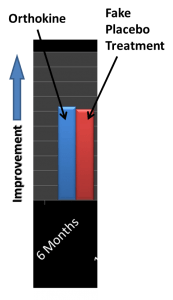PRP vs. Kobe’s Regenokine: Which is better for knee arthritis?
Is Kobe’s knee therapy really worth it? Last year I blogged on Regenokine, a simple conditioned serum therapy for arthritis. It”s also is called Orthokine in Germany or IRAP by many vets I know. Basically, it’s similar to Platelet Rich Plasma (PRP) therapy where the patient’s red blood cells are taken and separated from the serum (see above). However, unlike PRP, where the fraction of the blood containing serum and platelets is concentrated and immediately re-injected, the Orthokine process cultures the serum with etched glass beads so that white blood cells produce a natural anti-inflammatory called IRAP. This therapy has been all over the news lately as several big name athletes traveled to Germany to get the therapy (Kobe Bryant). However, what’s the reality versus the hype of PRP vs. Kobe’s Regenokine? Last year I compared the published research on Orthokine versus research published on PRP. Suffice it to say that Orthokine lost badly in a head to head comparison to PRP for treating mild knee arthritis. I’ve since had several people complain that all of the scientific graphs were difficult to understand in that post, so I decided to explain it in a different way:
Above is one of the graphs that I used in my last Orthokine blog. I’ve isolated the bars that represent what knee arthritis patients reported at 6 months after their 6 Orthokine shots in a paper published by the German inventor of the technique. I’ve labeled this section of the graph so you can better understand what it says. In this case, since the height of the bar equals how much improvement the patients reported, note that Orthokine is barely taller than the fake placebo treatment (which represents doing nothing at all). In other words, if you did nothing for your knee arthritis versus getting an Orthokine shot, at 6 months after the procedure, it’s unlikely that on average you would notice a difference. So why all the Orthokine hype? Good question-as it’s not supported by the science. I think it’s because our 24 hour news cycle has compromised the ability to deeply investigate medical stories. How has Orthokine gone to the dogs? I recently learned that the clinics using Orthokine here in the US (where this would be classified as a drug requiring a drug approval due to our crazy over-regulation in this space) are using Veterinary kits designed for dogs, cats, and horses on human patients! This therapy has been renamed “Regenokine”. How good is Orthokine compared to the simple PRP shot that Kobe could have gotten down the street for about $1000 versus the 7-8K he paid in Germany (not including the private jet charter which is likely another 30K)? I came up with a “value index” for patients with mild knee arthritis by using the results from the Filardo and Kon studies mentioned in my last blog. I took the cost of the 3 PRP shots used in these studies (about $1,000 a piece or less) and divided by the amount of improvement reported by patients 1 year after the shot (approximately 47%). This came out to $64 for every percentage improvement reported by the patient. I then took the cost of Kobe’s shot at 8K (leaving out the private Jet) and did the same calculation. This came out to a whopping $421 for every one percent improvement (largeley because there was such anemic improvement reported by these patients in the Orthokine study). The upshot? If you have mild knee arthritis, while following Kobe to Germany or getting treated with a dog kit here in the U.S. might be tempting (or maybe not), you’d be much better off finding a good PRP doctor to inject your knee. The answer to PRP vs. Kobe’s Regenokine is neither therapy are good at treating moderate or severe arthritis.

If you have questions or comments about this blog post, please email us at [email protected]
NOTE: This blog post provides general information to help the reader better understand regenerative medicine, musculoskeletal health, and related subjects. All content provided in this blog, website, or any linked materials, including text, graphics, images, patient profiles, outcomes, and information, are not intended and should not be considered or used as a substitute for medical advice, diagnosis, or treatment. Please always consult with a professional and certified healthcare provider to discuss if a treatment is right for you.

